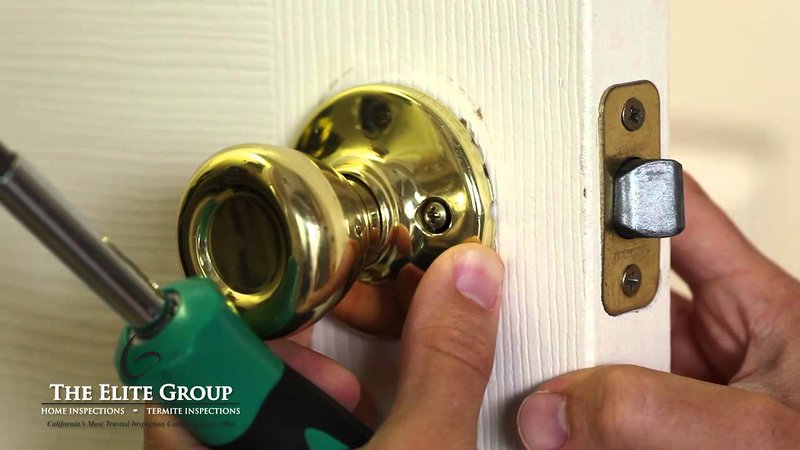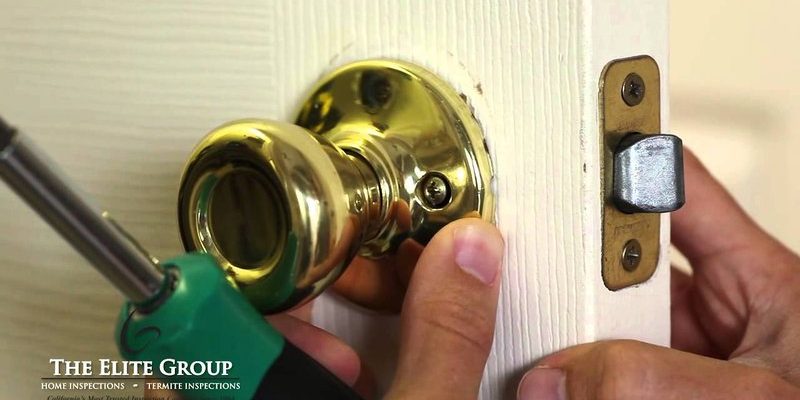
Think of a door latch like a puzzle piece. For it to fit perfectly, everything needs to be just right. If the latch isn’t aligning properly with the strike plate, or if the door has warped over time, it can get stuck, causing all kinds of headaches. Fortunately, addressing a stuck door latch doesn’t require a degree in home repair. With a few basic tools and some straightforward steps, you can get that latch working smoothly again.
Understanding How Door Latches Work
First, let’s break down what a door latch actually does. A door latch is a mechanical device that keeps your door closed and secure. It works by inserting a small bolt or hook into the door frame when you close the door. But how does it get stuck on door stops?
When you push the door shut, the latch should smoothly slide into the strike plate. But if anything is out of alignment—like the door frame, the latch itself, or even the hinges—things can get tricky. Imagine trying to fit a square peg into a round hole; if it doesn’t line up, it won’t work.
Now you might be asking, “What causes misalignment?” Common culprits include temperature changes that cause the wood to expand or shrink, heavy use that can bend hinges, or even settling of the house itself. All of these factors can lead to a latch that’s not behaving properly.
Common Signs of a Stuck Door Latch
Before you dive into repairs, it’s wise to identify the symptoms of a stuck door latch. Here are some telltale signs:
- Difficulty closing the door: If you have to push or shove to get the door closed, it’s a sign the latch isn’t aligning correctly.
- Noisy latching: If you hear grinding or scraping sounds when the door closes, your latch may be rubbing against something it shouldn’t.
- Latch won’t retract: If the latch won’t pull back when you turn the knob, there might be a mechanical failure at play.
- The door sticks: If the door feels sticky when you open or close it, you could have a latch that’s out of whack.
Recognizing these signs early can save you a lot of hassle down the line.
Gathering Necessary Tools for Repairs
Before you tackle the fix, you’ll want to gather a few tools. Having everything on hand makes the process smoother. Here’s what you’ll need:
- Screwdriver: A standard or Phillips screwdriver will help you adjust or replace screws.
- Lubricant: A can of silicone spray or graphite lubricant will keep your latch moving smoothly.
- Level: This tool helps check if your door is hanging straight.
- Measuring tape: To make sure everything is lined up perfectly.
Having the right tools ready will make the repair process easier and more efficient.
Adjusting the Door Latch and Strike Plate
So, how do you actually fix a stuck latch? One of the first things to try is adjusting the door latch and the strike plate. Here’s a simple step-by-step guide:
1. Inspect the alignment: Close the door slowly and watch where the latch meets the strike plate. If they aren’t lining up, that’s your issue.
2. Loosen screws: Using your screwdriver, gently loosen the screws holding the strike plate in place. You don’t need to remove them completely; just loosen enough to adjust.
3. Realign the strike plate: Move it up, down, or sideways so that it lines up perfectly with the latch. Hold it in place and tighten the screws back up.
4. Test the latch: Give the door a gentle push to see if it closes smoothly now. This step will give you immediate feedback on whether you’ve made the right adjustments.
If it still sticks, you might need to look deeper into the latch mechanism or the hinges.
Lubricating the Door Latch
Sometimes, the issue is as simple as a lack of lubrication. Latches can become sticky or hard to move if they’re not properly maintained. Here’s how to lubricate your latch:
1. Clean the area: Before applying any lubricant, wipe down the latch and surrounding area. Dust and grime can affect its performance.
2. Apply lubricant: Spray a small amount of lubricant on the latch mechanism and any moving parts. You don’t need a lot; just a quick spritz will do.
3. Work the latch back and forth: After applying the lubricant, open and close the door several times. This helps distribute the lubricant evenly through the mechanism.
4. Wipe away excess: Make sure to remove any excess lubricant that may ooze out. You don’t want it to attract dirt or dust.
Lubrication can revive a sticky latch and prevent future issues!
Resolving Door Warping Issues
If the latch is still getting stuck after adjustments and lubrication, you may be dealing with a warped door. Doors can warp for various reasons, including humidity or temperature changes. Here are a few ways to address this:
1. Check door alignment: Use your level to see if the door is perfectly vertical on the frame. If it’s off, you might need to adjust the hinges.
2. Tighten loose hinges: Sometimes, just tightening the screws on the hinges can realign the door. A secure hinge can make a world of difference.
3. Consider door reinforcements: If your door is significantly warped, you may need to install a door brace or even consider replacing it.
4. Weather Stripping: Adding weather stripping around the door frame can sometimes help with air gaps that cause warping.
Resolving warping issues takes a little more effort, but it’s worthwhile for a smoothly functioning door.
Knowing When To Call A Professional
While many of these fixes can be done at home, sometimes it’s best to call in a professional. You might wonder when that time comes. Here are a few instances:
– If the latch mechanism is damaged: If it’s broken or bent, fitting a new latch might be necessary.
– If DIY fixes are too complicated: If you feel overwhelmed or unsure, it’s okay to reach out for help.
– If it’s a recurring issue: If you find you’re constantly dealing with this problem despite your efforts, it might be indicative of a larger issue.
There’s no shame in admitting that a problem is beyond your skill set!
In conclusion, dealing with a door latch that’s getting stuck on door stops can feel like a hassle, but it doesn’t have to be daunting. By understanding how the latch works, recognizing signs of issues, and following some straightforward repair steps, you can achieve a smoother, more functional door. And if all else fails, remember, there are professionals who can help. So, take a deep breath, gather your tools, and get to work! Your door will thank you.
